#henri ii de condé
Explore tagged Tumblr posts
Text
"It is something that must be remedied". Dueling, noble privilege, honor, and the authority of the State.
At the Assembly of Notables, the king's friends Marshals La Force and Bassompierre complained that although the noble order had saved Henry IV's throne when the other orders had "deserted" him, now they found themselves pushed unceremoniously out of judicial and financial offices and even the king's council. Louis XIII replied cautiously that he intended to "favor his nobility with all the advantages he could." In the next few months he responded with a mixture of token concessions and severe demands. On the benign side, he tried (in vain) to make nobles engage in ignoble commerce by legalizing it, and he gave them a monopoly of household offices and top military and ecclesiastical posts. On the disciplinary side, he slashed their pensions, added yet another edict against dueling (superseding those of 1623 and 1624), set up a noble commission to authorize the demolition of chateau and town fortifications in the interior of the realm, and made it a capital offense to attack state policies and their authors (i.e., Richelieu) in printed tracts. Richelieu's hand can be seen in both the benign and the harsh sides of these reforms; Louis hand is especially evident in the latter.
The most spectacular example of Louis XIII's reforming action involving the nobility during this period was the execution of Bouteville for dueling. Francois de Montmorency, count of Bouteville, was a member of a distinguished provincial family and had the best connections at court. He embodied the noblest qualities of the fearless warrior in Louis's battles with the Huguenots. Unfortunately, he was also, at age twenty-seven, the champion dueler of France. Richelieu exaggerated only slightly in saying that Bouteville had his hand in every duel in France between 1624 and 1627. Some sort of showdown with Louis XIII was inevitable.
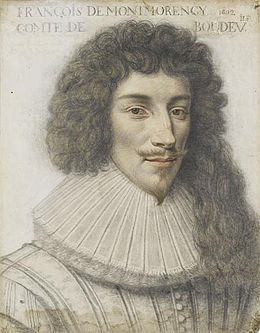
Just before Richelieu's rise to power Louis had tried to enforce an earlier revision of antidueling laws. But Bouteville had fled, and dueling tapered off. It reemerged in 1626. The count was in the thick of the fight, having returned to France just as the old law he had transgressed expired and the new —and more enforceable— edict of February 1626 was being unveiled. Combining the king's determination and his leading minister's ingenuity, the edict of 1626 addressed the pronoble parlementary judges' objection to executing every transgressor of previous laws. Duelers were put on notice that if they dueled or challenged anyone to a duel one on one, they would be stripped of their public posts; if they dueled with seconds —("Three Musketeers"-style) or killed an opponent, they would die. Furthermore, common knowledge alone—rather than virtually unobtainable witnesses, could send a nobleman to the executioner's block.
No one paid any attention. Louis himself seemed ambivalent, for he let his disgraced favorite Barradat off with only banishment from court. Bouteville's case, however, was different from all the rest: he was forever getting involved in elaborate, blood-shedding duels over his honor, even when he tried to run away from them! Just before implementation of the new edict, he engaged in a duel of three against three that ended the lives of two opponents, including yetanother boyhood companion of King Louis. At the beginning of 1627 Bouteville was drawn into yet another duel after his opponent, La Frette, called him a coward for refusing his challenge. A Bouteville second was killed, and the ace dueler promptly fled with his cousin Chapelles to the Spanish Netherlands to escape the new edict's penalties.
Louis XIII unwittingly led Bouteville at long last to his doom by giving the honor-ridden young man a partial pardon that looked like a slight: he would not be prosecuted if he returned to French soil but stayed away from court. Stung by this affront, Bouteville decided to evade no longer the baron of Beuvron, the would-be revenger of his last dueling victim, who had come unsuccessfully all the way to Brussels to challenge him. They fought a multiple duel, in the most public place in Paris Bouteville could think of to uphold his honor against his noble opponent and his royal master —the fashionable Place Royale.
Observers reported the king as being "so offended" that he sent Bassompierre after the fleeing Bouteville and Chapelles with Swiss guards, asked the parlementary prosecutors if the duo could be taken dead or alive, and "expressed great joy" at the news of their capture (while Richelieu and Marillac merely shrugged their shoulders and went on with their work). The instigator of the duel, Beuvron, escaped to England.
As the trial proceeded, Louis managed to keep his emotions in check. When Bouteville's wife, three months pregnant, fell on her knees after mass, the king avoided her, commenting: "The woman brings me pity, but I wish to and must maintain my authority." The condemned man's uncle by marriage, Condé, got nowhere with the typical male noble arguments: "He has failed by error of the custom of your kingdom, which makes honor consist of undertaking perilous actions…. The universal quest for glory, not a personal design to disobey you, drew him into this disobedience."
It is possible that Louis might have been swayed had Richelieu not constantly argued that a test case be made of Bouteville's flagrant defiance of the law. But, as we have seen in our discussion of the royal-ministerial partnership, the minister also made counterarguments for clemency. Richelieu later wrote that he had never been more shaken than by this conflict of values, and by appeals that came from his own family.
After the Parlement had sentenced Chapelles and Bouteville to decapitation, and their opponents to hanging in effigy, Louis armed himself as best he could against the shrieks of Condé's wife and the fainting of Mme de Bouteville. He cited his edicts, conscience, oath, and the blood of his nobility, "for which he had to answer to God." To Charlotte de Montmorency-Condé's cries for mercy he answered: "Their loss moves me as much as you, but my conscience forbids me to pardon them." According to the royal historiographer Bernard, Louis also exclaimed: "It is necessary for a little blood to be shed in this instance to stop the stream that flows daily." Louis XIII insisted that the execution be public, nervously ordered the guards to seize anyone who so much as called for "grace," and had the surrounding streets blocked off with chains and carts.
Bouteville and Chapelles died bravely and repentant for their crimes, dignifying a scene that must have sickened the entire court. Louis himself had to be bled a week later, and immediately fell dangerously ill. Was it worth it? Bernard contended that dueling was lessened, and history has accepted his verdict. In truth, the death on 22 June 1627 of a young nobleman who had killed twenty-two opponents was an exceptional act of state. In contrast to Henry IV and Marie de' Medici, who had condoned the socially acceptable crime of private dueling, Louis XIII simply said that state order was incompatible with flagrant lawless behavior in the name of noble honor.
During the rest of his reign Louis chose carefully where to draw the line. The axe fell on a beloved captain of the king's guards, but spared Protestant and Catholic officers in 1627-28, including Richelieu's cousin, who tried to settle the last of the religious wars by ritual duels. In 1636 Richelieu wrote to Louis that dueling had reappeared, to which the king replied: "It is something that must be remedied."
A. Lloyd Moote - Louis XIII the Just
#xvii#a.lloyd moote#louis xiii the just#louis xiii#cardinal de richelieu#françois de montmorency-bouteville#house of montmorency#michel de marillac#françois de rosmadec comte de chapelles#guy d'harcourt comte de beuvron#élisabeth-angélique de vienne#charlotte-marguerite de montmorency#henri ii de bourbon-condé#dueling#executions#richelieu: sire il est question de couper la gorge aux duels ou de couper la gorge aux lois de votre majesté#also richelieu: i also have strong arguments ready in case you lean for clemency#bouteville: watch me go out in style
13 notes
·
View notes
Text
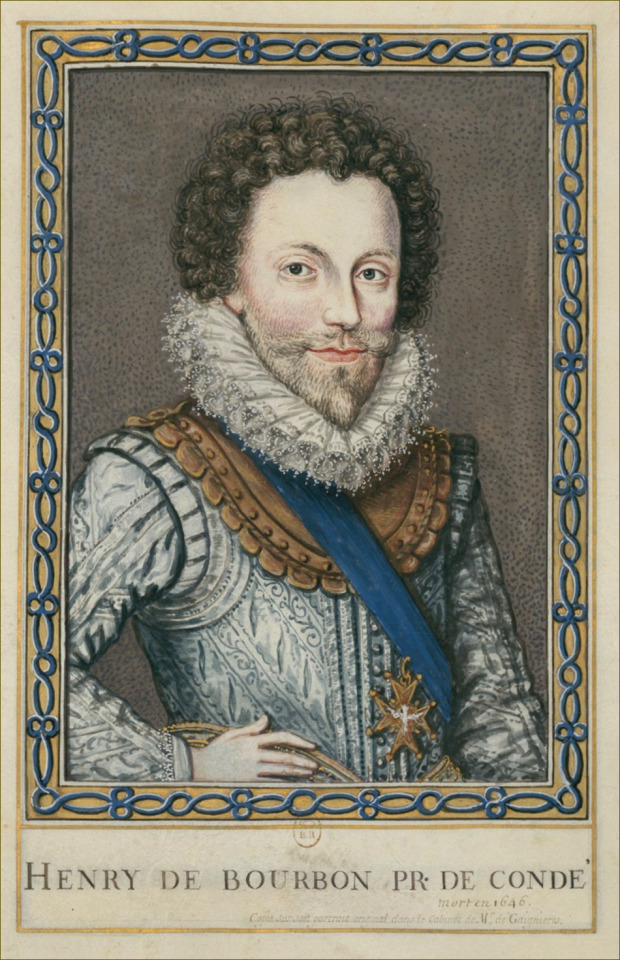
Henri II de Bourbon, Prince de Condé.
#royaume de france#french aristocracy#henri ii de bourbon#prince de condé#maison de bourbon#bourbon condé
6 notes
·
View notes
Text










The Château de Chantilly is a historic French château located in the town of Chantilly, Oise, about 50 kilometres north of Paris. The site comprises two attached buildings: the Petit Château, built around 1560 for Anne de Montmorency, and the Grand Château, which was destroyed during the French Revolution and rebuilt in the 1870s. The château is owned by the Institut de France, which received it from Henri d'Orléans, Duke of Aumale.
The original mansion was destroyed during the French Revolution. It was repaired modestly by Louis Henri II, Prince of Condé, but the entire property was confiscated from the Orléans family between 1853 and 1872, during which interval it was owned by Coutts, an English bank. Chantilly was entirely rebuilt, between 1875 and 1882, by Henri d'Orléans, duc d'Aumale (1822–1897).
The new château met with mixed reviews. Boni de Castellane summed up one line of thought: "What is today styled a marvel is one of the saddest specimens of the architecture of our era — one enters on the second floor and descends to the salons". In 1889, the Chateau was bequeathed to the Institut de France as a price for the Duc d'Aumale's return from political exile.
#architecture#europe#historic buildings#architectural history#historical#history#france#chateaudechantilly#chantilly#castle#chateaux#chateau#castello#castillo#sculpture#sculptures#neo renaissance#renaissance#historicism#park#statue#arquitectura#dogs#lions#amazing beauty#travel#explore#exploretheworld#french
20 notes
·
View notes
Text

Portrait of Louis I de Bourbon, Prince de Condé (1530-1569)
Artist: Workshop of François Clouet (French, 1510–1572)
Date: 16th Century
Medium: Oil on Panel
Collection: Private Collection
Portrait of Louis I de Bourbon, Prince de Condé (1530-1569), bust-length, in a gold-embroidered doublet
Louis de Bourbon, 1st Prince of Condé (7 May 1530 – 13 March 1569) was a prominent Huguenot leader and general, the founder of the Condé branch of the House of Bourbon. Coming from a position of relative political unimportance during the reign of Henri II, Condé's support for the Huguenots, along with his leading role in the conspiracy of Amboise and its aftermath, pushed him to the centre of French politics. Arrested during the reign of Francis II then released upon the latter's premature death, he would lead the Huguenot forces in the first three civil wars of the French Wars of Religion before being executed after his defeat at the Battle of Jarnac in 1569.
#portrait#french renaissance#prince#francois clouet#oil on panel#european nobility#16th century#french art
2 notes
·
View notes
Text
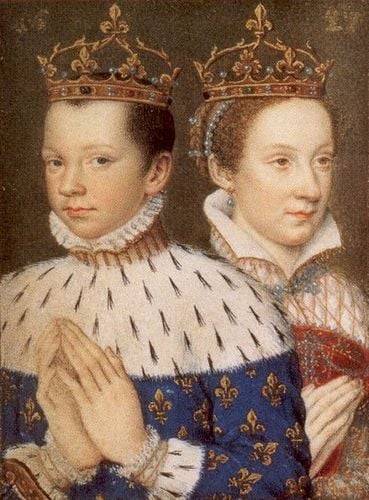
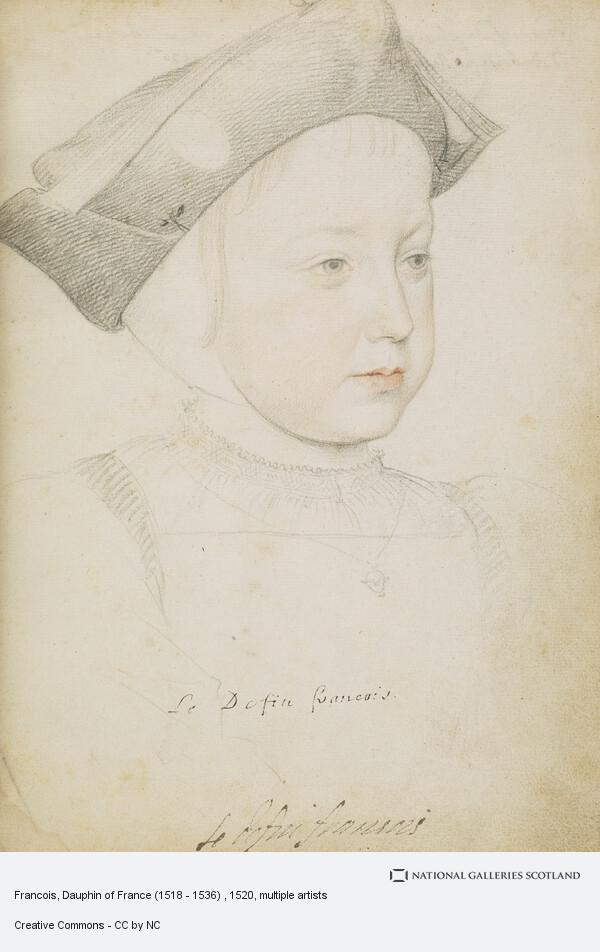
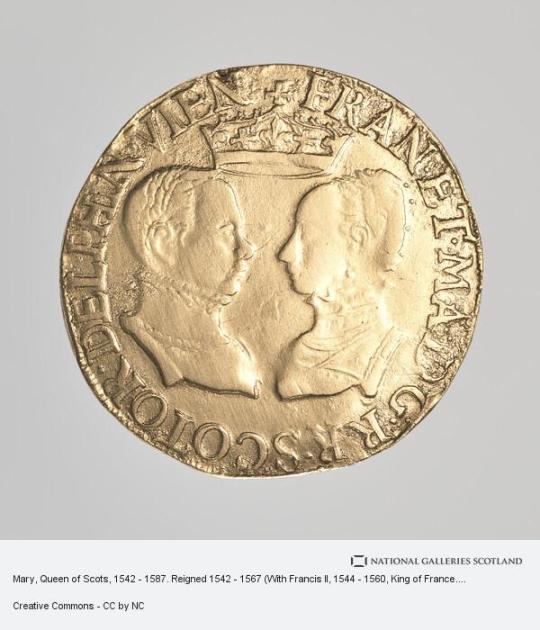
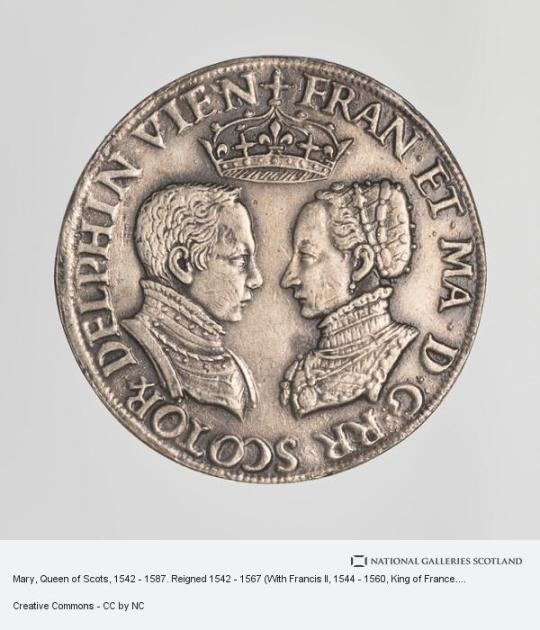
On December 5th 1560 King Francis II of France, the husband of Mary Queen of Scots, died.
Although not crowned it has to be remembered that Francis was also King consort of Scotland.
Francis was born on 19 January 1544, the eldest son of Henry II of France and Catherine de Medici, he was named for his grandfather, King Francis I.
When Francis was four years old, the Scots and French signed the Treaty of Haddington in July 1548 arranging the betrothal of Mary Queen of Scots and the dauphin Francis in return for French aid to expel the invading English. Mary Queen of Scots sailed from Dumbarton for France in the August of 1548 when she was but five years old. The young Queen was accompanied by her four Marys, the daughters of Scottish noble families, Mary Beaton, Mary Seton, Mary Fleming and Mary Livingston.
Mary spent the rest of her childhood at the court of her father-in-law, Henri II Her father-in-law, Henry II of France wrote 'from the very first day they met, my son and she got on as well together as if they had known each other for a long time'. Mary was a pretty child and brought up in the same nursery as her future husband and his siblings, became very attached to him. She corresponded regularly Mary of Guise , who remained in Scotland to rule as regent for her daughter. Much of her early life was spent at Château de Chambord. She was educated at the French court learning French, Latin, Greek, Spanish and Italian and enjoyed falconry, needlework, poetry, prose, horse riding and playing musical instruments.
Mary was the cosseted darling of the French court, the doting Henri II wrote 'The little Queen of Scots is the most perfect child I have ever seen.' He corresponded frequently with Mary of Guise, expressing his delight in his young daughter-in-law. Mary's maternal grandmother, Antoinette of Guise, in a letter to her daughter in Scotland, stated that she found Mary ' very pretty, graceful and self assured.'
Francis and Mary were married with spectacular pageantry and magnificence in the cathedral of Notre Dame, Paris, by the Cardinal Archbishop of Rouen, in the presence of Henry II, Queen Catherine de' Medici and a glittering throng of cardinals and nobles. The French courtier Pierre de Brantôme described Mary as ‘a hundred times more beautiful than a goddess of heaven … her person alone was worth a kingdom.’
Among the wedding guests was one, James Hepburn Earl of Bothwell. Francis was fourteen and Mary fifteen at the time, Francis then held the title King consort of Scotland until his death.
When Henri II was killed during a jousting contest, incidentally by Gabriel de Lorges, Comte de Montgomery, Captain of The Scots Guard, and a descendant of Alexander Montgomerie of Auchterhouse, Mary's young husband Francois ascended the throne. Francis was reported to have found the crown of France so heavy that the nobles were obliged to hold it in place for him.
The young Francis became a tool of Mary's maternal relations, the ambitious Guise family, who seized the chance for power and hoped to crush the Huguenots in France. The Huguenot leader, Louis de Bourbon, prince de Condé plotted the conspiracy of Amboise in March 1560, an abortive coup d'etat in which Huguenots surrounded the Château of Amboise and attempted to seize the King. The conspiracy was savagely put down, and its failure led to increase the power of the Guises. This alarmed the king 's mother, Catherine de Medici, who reacted by attempting to secure the appointment of the moderate Michel de L'Hospital as chancellor.
During the autumn of 1560 François became increasingly ill, and died from the complications of an ear condition, in Orléans, Loiret. Since the marriage had borne no children, the French throne passed to his 10-year-old brother, Charles IX. Mary was said to be grief-stricken Multiple diseases have been suggested as the cause of Francis' death, such as mastoiditis, meningitis, or otitis exacerbated into an abscess. Francis was buried in the Basilica of St Denis.
There was no place for the seventeen year old Mary, Queen of Scots in France, she prepared to return to her native Scotland with an uncertain future that would hold.
17 notes
·
View notes
Text




IMAGENES Y DATOS INTERESANTES DEL DIA 14 DE JUNIO DE 2024
Día Mundial del Donante de Sangre, Día Nacional de las Lenguas de Signos Españolas, Semana Internacional de la Salud Masculina, Año Internacional de los Camélidos.
San Eliseo y Santa Digna.
Tal día como hoy en el año 1985
Milicianos chiíes libaneses secuestran un avión de la aerolínea TWA cuando volaba de Atenas a Roma, con 147 pasajeros a bordo. El secuestro duró 16 días.
1982
Rendición de las tropas argentinas en Puerto Stanley (capital de las Islas Malvinas) dos meses después de iniciadas las hostilidades entre Argentina y Reino Unido. En la Guerra de las Malvinas, han muerto casi 700 argentinos y poco más de 200 británicos. (Hace 42 años)
1940
España ocupa Tánger (ciudad del norte de Marruecos) con una fuerza de 4.000 hombres procedentes del Marruecos español "en nombre del sultán", incorporando así la plaza al protectorado. La ocupación cuenta con el consentimiento de Francia y el Reino Unido, ya que el Gobierno español ha expresado su intención de respetar todos los derechos de las diferentes potencias con grandes intereses en la zona. (Hace 84 años)
1940
Las tropas nazis entran en París (Francia). Sólo hace dos semanas que se han evacuado a los defensores aliados a Gran Bretaña. Una semana después, el Primer Ministro francés Henri Pétain firmará un armisticio con los alemanes y formará un gobierno colaboracionista. (Hace 84 años)
1800
En el norte de Italia, el ejército francés del primer cónsul Napoleón Bonaparte derrota a los austríacos en la batalla de Marengo volviendo a retomar el control de Italia. (Hace 224 años)
1789
El Capitán William Bligh y 17 marinos expulsados del buque británico Bounty, alcanzan las costas de Timor tras navegar 3.600 millas a bordo de una pequeña chalupa. Sorprendentemente, sólo uno de los 18 hombres ha muerto durante el viaje al ser atacado por los nativos de una isla donde habían desembarcado a recoger víveres y agua potable. Bligh será recogido por un barco británico que lo devolverá a Inglaterra, donde en marzo de 1790 se enfrentará a un consejo de guerra del que saldrá absuelto. (Hace 235 años)
1777
En EE.UU., los padres de la patria reunidos en el Segundo Congreso Continental, aprueban una resolución mediante la cual se establece la bandera de la nueva nación. En la resolución se dice que el estandarte deberá tener "13 franjas rojas y blancas distribuidas en forma alterna, que representarán los 13 Estados recién creados, y 13 estrellas sobre un solo fondo, que representarán su fusión en una sola unión". (Hace 247 años)
1699
En Inglaterra, en la Real Sociedad de Londres, el mecánico Thomas Savery presenta la primera máquina de vapor, cuyo diseño se guardará como secreto de Estado. Será empleada para extraer el agua de las minas. (Hace 325 años)
1658
En la actual Francia, en las arenas de Dunkerke tiene lugar la Batalla de las Dunas que enfrenta al ejército anglo-francés (ambos países colaboran contra las tropas españoles en los Países Bajos), bajo el mando del vizconde de Turenne, contra el español conducido por Juan José de Austria y Luis II de Condé. El enfrentamiento concluye con la derrota española, que pierde cerca de 6.000 hombres, incluyendo de 3.000 a 4.000 prisioneros, frente a los 4.300 del ejército anglo-francés. (Hace 366 años)
1645
En Naseby, en el transcurso de la guerra civil inglesa, el New Model Army del Parlamento, comandado por Oliver Cromwell y Thomas Fairfax, derrota a los partidarios del rey Carlos I, mandados por el príncipe Ruperto del Palatinado. De nuevo la caballería de Cromwell ha protagonizado un decisivo ataque. (Hace 379 años)
1158
En el documento "Der Augsburger Schied (La Decisión de Augsburgo)", fechado en el día de hoy, se recoge una concesión que hace emperador Federico I Barbarroja al duque bávaro Enrique de León, de un permiso para construir un puente que cruce el río Isar (Alemania), en una zona que está habitada por religiosos desde el siglo VIII, y que se menciona por primera vez con el nombre de Múnich. Es por ello que este documento se considera el acta fundacional de la ciudad alemana de Múnich. (Hace 866 años)
1 note
·
View note
Text
Jour 02.
Henri II de Bourbon-Condé, Prince de Condé.
Henri IV maria le jeune Henri II de Bourbon-Condé, prince de Condé, à Charlotte de Montmorency.
Il espérait ainsi pouvoir se faire la donzelle puisque le jeune Condé était réputé préférer les hommes.
instagram
0 notes
Photo
Gaspard de Coligny, seigneur de Châtillon (16 February 1519 – 24 August 1572), was a French nobleman, Admiral of France, and Huguenot leader during the French Wars of Religion. He served under kings Francis I and Henry II during the Italian Wars, attaining great prominence both due to his military skill and his relationship with his uncle, the king's favourite Anne de Montmorency. During the reign of Francis II he converted to Protestantism, becoming a leading noble advocate for the Reformation during the early reign of Charles IX.
With the outbreak of civil war in 1562, Coligny joined the Huguenots in their fight against the Crown. He served as a lieutenant to Louis, Prince of Condé throughout the first two civil wars, before becoming the de facto leader of their military efforts after Condé's death during the third civil war. Due to accusations levelled at him by the assassin of the Catholic Francis, Duke of Guise, in 1563 the powerful Guise family accused him of responsibility for the assassination, and unsuccessfully tried to bring a case against him. Coligny was assassinated at the start of the St Bartholomew's Day massacre, in 1572, on the orders of Henry, Duke of Guise.

Joseph-Benoît Suvée (1743–1807). Admiral de Coligny impressing his murderers. 1787. Oil on canvas, 324 x 260 cm. Museum of Fine Arts, Dijon (Inv. CA 465).
“Art thou the Admiral de Coligny?” "I AM,“ he replied, with inexpressible composure, with a dignity and grace of ineffable benignity that awed them to silence, and stayed for a moment their murderous design. He then added, in accents solemn and impressive, "Young man! Reverence these my grey hairs, my wounds, and my infirmities! But do what thou wilt, thou canst only shorten my poor afflicted life but a very few days-”
- ‘The death of Admiral Coligny.' The Scottish Christian herald. Vol. III (1841).
76 notes
·
View notes
Photo



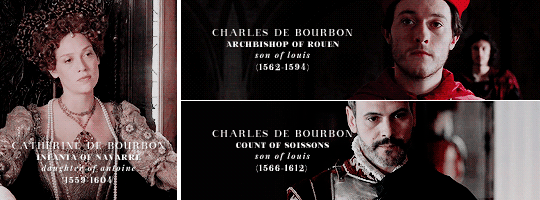



prominent members of the Bourbon-Condé Family (16th-17th century)
#historyedit#documentaryedit#perioddramaedit#versaillesedit#mine#*#16th century#17th century#louis xiv#louis xiii#henri iv#the bourbon family#the condé family#catherine de bourbon#anne-geneviève de condé#armand de conti#louis ii de condé#henri i de condé#henri ii de condé#charles ii de bourbon#charles de bourbon#louis i de condé#antoine de bourbon#françois de conti#it's a bit of a mess rip
254 notes
·
View notes
Photo

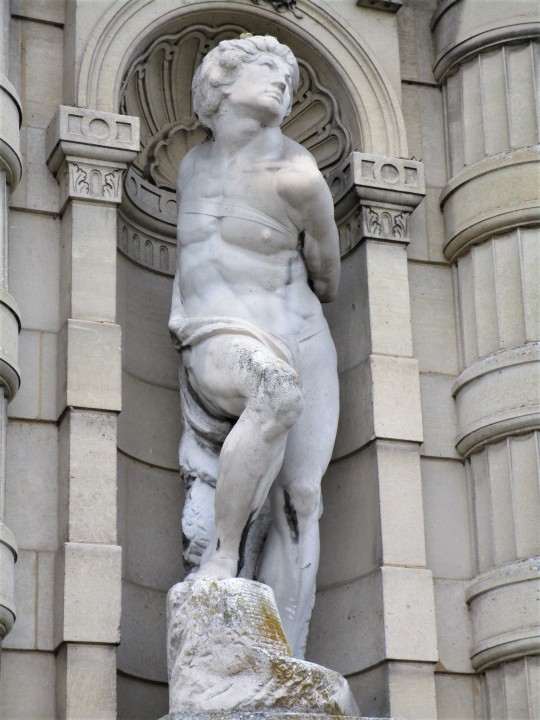
These two sculptures are copies of Michelangelo’s “Slaves” commissioned by the Duke of Aumale to stand on either side of the door of honor at Château de Chantilly. They were sculpted by Henri-Charles Maniglier from 1879-1881.
The original statues by Michelangelo, now at the Louvre, were created to be part of the tomb of Pope Julius II. When the project was modified, they left Italy and ended up at the Château d'Écouen in France. Interpretations of the sculptures vary. The following is from the website of the Condé Museum:
Some see in them the enslavement of the Arts after the death of the Pope, a great patron. Others take up Plato's idea that the human soul is chained to a heavy body. The right-wing slave, the rebel, gives the impression of wanting to free himself from a mysterious grip, the arm tries to detach, his right leg rests on the base to give the necessary energy for liberation, whether physical, political or aesthetic. The slave of the left, the dying, lets himself be carried away by his destiny. One has an exaggerated musculature showing his effort, the head is straight, the eyes are open. The other has a musculature that remains shy, the head is leaning back, the eyes are closed, symbol of abandonment.
Photos by Charles Reeza
9 notes
·
View notes
Text
Barbin, Mangot, Luçon
Condé's incarceration intensified the power struggle between two factions equally marred by political self-seeking. The rebels' new rallying cry of avenging their leader's arrest could not overcome their moral bankruptcy as a party aimed at transferring to themselves the power and patronage enjoyed by the queen mother's Italian favorites. On the royal side, the arrest was part of a new state policy of firmly resisting rebel demands. That policy shift stemmed from the appointment during the last months of 1616 of a vigorous ministerial triumvirate: Claude Barbin, Claude Mangot, and Armand-Jean du Plessis, bishop of Luçon. The triumvirs' effectiveness was hampered, however, by popular antipathy toward the couple who had put them in power, Concini and his wife, Galigaï.
Of the three "creatures" of the Ancres, Barbin had the most influence, and eventually suffered most severely from the king's wrath after the royal coup d'état of 1617. A shrewd manipulator of money and people, this private financier had advanced his career by leasing the collection of state fees to the profit of his friend, Leonora Galigaï, then became Marie's personal financial director and finally royal superintendent of finance. Barbin took the lead among the new ministers in boldly urging Marie to oppose princely disorder.
Mangot's background was somewhat less controversial. He had parlayed a brilliant law career and legal assistance to Concino Concini into acquisition of the top post in the Parlement of Bordeaux, then briefly served as a secretary of state, and finally as keeper of the seals, thereby assuming the judicial functions —but not the office itself— of chancellor, which post was always for life.
The minister who signed his name Lusson at this time was the last of the three to enter the council, and owed a great deal of his influence with the queen mother and her Italian favorites to the patronage of Barbin. Armand-Jean du Plessis, sieur de Richelieu, was the ambitious scion on his father's side of the petty noble Richelieu-du Plessis family, which had been prone to dueling and overspending, and on his mother's side of the hardworking La Porte - Meilleraye family of robe lineage. He had already come far as bishop of Lucon, orator of the clergy at the Estates General, almoner of young Queen Anne, and personal secretary to the queen mother. In November 1616, he became secretary of state for foreign affairs.
Sympathetic biographers have read more into the future cardinal-minister Richelieu's brief conciliar career of 1616-17 than the hard evidence proves. All we can say with certainty is that he showed himself to be bright and energetic in internal and external affairs. His surviving letters to Ancre were embarrassingly fawning, even for an era that assumed the way to become a favorite at court and stay there included a large dose of flattery and obsequiousness. Luçon also revealed his driving ambition and authoritarian bent to such an extent that, at his fall in 1617, the keenly observant young Louis XIII expressed relief to be rid of his tyranny.
The triumvirate was able to hold the military edge for the royal side against Condé's followers in the desultory fighting of the last months of 1616 and the beginning of 1617, but without finding a moral cause that would definitively tip the balance in this latest miniwar. To the contrary, the ever-escalating level of the Ancre couple's conspicuous privilege and power undermined everything Barbin was attempting to accomplish, and served also to make the queen mother more vulnerable as the Ancres' patroness.
A. Lloyd Moote- Louis XIII the Just
#xvii#a.lloyd moote#louis xiii the just#henri ii de bourbon-condé#marie de médicis#concino concino#leonora galigaï#claude barbin#claude mangot#cardinal de richelieu#louis xiii#i can't believe he let some letters survive#how embarrassing#now i need to read them#ah#luçon! me voilà débarrassé de votre tyrannie!#court intrigues and coups d'état#barbin trying to put out fires everywhere#something wicked this way comes
4 notes
·
View notes
Text
Reign Preference
Writer: im-a-writer—im-in-distress.tumblr.com
Fandom: Reign
Preference with: Francis de Valois, Bash de Poitier, Leith Bayard, Stéphane Narcisse, Henry II of France, Louis Condé
Rating: #Romance
Words: 750+
Warning(s): N/A
A/N: So... 1) I found these on my computer. I don’t remember when I wrote them, but it wasn’t for this blog. Which means it was for the old one I used to share with a friend, which means it’s been... 6+ years? I don’t remember when I wrote them, but I thought they were good, and worth sharing. (As such, they are unedited.) So, I’m posting them, along with another set: here. 2) I will not be creating an OC-version for these. Better to just let them be what they are. 3) If anyone’s interested in preferences, request away. I really need an excuse to get back into writing. And 5) Read & Review. I hope you like them.
Francis II
As king, Francis is often surrounded by the guard and he can never get a moment alone with you. To see you across the table or at the end of the corridor and not being able to touch you is killing him. So he retires early to his chambers one night and sneaks out to see you, leaving his unknowing guards by his bedroom door. Bribing one of the maids into secrecy, he smuggles the makings of a picnic from the kitchen before going to meet you out by the lake’s edge—where he knows you go to escape. He surprises you, dropping down beside you with the basket, that smile of child-like innocence on his face. The two of you enjoy the picnic, talking about less complicated things than politics or the juicy gossip from court. You tell him about your home, who you were as a child. He says he’d like to visit with you one day—you say you’ll take him.

Bash de Poitier
His new title of “King’s Deputy” keeps Bash busy most of the time, and by the end of the day, he usually just wants to crash. You know he feels bad, but it’s exhausting—what he does. So you decide to help him. You run to the stables and ready your own horse, before mounting and going to meet him at the entrance of the castle. His eyes light up when he sees what you were aiming to do, but he assures you that he’s not working today. Instead he climbs up behind you on your horse, and the two you take off across the open fields of France. You don’t know how long you ride, but when you stop, you no longer recognize the surroundings. You��ve reached an open meadow full of bright wild flowers dotting across the horizon. Bash helps you dismount, and then hands you his sword. You brighten as you he holds you from behind, showing you how to wield it. After you get the hang of it, he takes out a dagger of his own and you two spar as silhouettes on the sunset.

Leith Bayard
The two of you act like the oldest of friends. Whenever you get a chance, you make trouble for each other. You’ll leave little trails for him to follow, aiming to confuse him into giving up and asking you straight out. He’ll interrupt any conversation you try to have with anyone, even if could get you both in a load of trouble. He words himself trying to make you blush, and you challenge him with seemingly innocent quips. It’s usually you who loses, as he’s just so charming. But those rare moments when you beat him—those make you feel invincible.

Stéphane Narcisse
Aside from the smirks from across the room or the brush of a touch as you pass each other in the hall, you and Narcisse haven’t had any time together for a long time. You have to keep up appearances: keep your mouth shut where you’re opinion doesn’t belong, engage in polite conversation with the person next to you, smiling at their flirtations. But seeing one grab your arm and pull you close—he snaps. Narcisse makes a beeline for you, yanking you away from them and out of the room. He doesn’t stop until you’re in an abandoned corridor. His eyes bore into yours; you’re breathing shallow and heavy. He orders you to stop teasing him, that you smiling at someone else isn’t okay. Instead you tip your lips to his ear and whisper, “Let the games begin.”

Henry II of France
It’s hardly state secret what you and Henry do behind closed doors, but it’s the moments you share in the open that you cherish the most. The light touches, the bright smiles, the way his eyes hold yours. He can’t tell you much. Your situation is complicated and fragile, but it never feels that way. And you never mind being the one to fill conversation, because he always listens with such intent. You wonder what kind of king he could have been if everyone had seen that side of him. But despite it all, you love the man he is now, because if everyone had seen him that way, you’d never have him.

Louis Condé
Lord Condé was never entitled like the rumors of the family assured. It was refreshing to meet a royal who didn’t just view everyone else as pawn pieces. In fact, the very concept of the game made his head spin. You grew up playing it with whoever lost a bet to you, so teaching Condé seemed an easy task—It wasn’t. But it was rather amusing. The poor man refused to place any of his pieces in the line of fire, instead preferring to spend the entirety of the game running away from your pieces. You couldn’t really blame him. You were the best at the game.

#reign tv#reign#reign guys#francis de valois#king francis imagine#king francis preference#sebastian de poitiers#bash imagine#bash preference#leith bayard#leith imagine#leith preference#stephane narcisse#narcisse imagine#narcisse preference#lord narcisse imagine#lord narcisse preference#henry ii#king henry imagine#king henry preference#henry ii imagine#henry ii preference#louis conde#prince conde#prince conde imagine#prince conde preference#my writing#my work
50 notes
·
View notes
Note
What did the women who Catherine de medichi got to sleep with men as spies get? In those times wouldn’t it ruin their marriage options?
As is so often the case, the amount of illicit sex and related hijinks is either a) overstated in modern sources in an attempt to make the sixteenth century “sexier”; or b) sexist propaganda from the time, designed to make Catherine de’ Medici look awful in comparison to the men around her. I’m not saying it didn’t happen, but it is probably overstated.
(For exmple, the topless banquet of 1577? Probably just a banquet. The topless part only appears in a source who wasn’t actually present.)
The Escadron Volant (”Flying Squadron”) was an élite group of ladies-in-waiting who served Catherine de’ Medici during her time as Queen Mother of France (1559-1589). These were ladies of the nobility, and may have included some of Catherine’s own daughters at different times. Their reputation is as skilled spies who seduced information out of their marks. The first part is definitely true. The second is anecdotally true.
We know that Catherine de’ Medici commanded a network of spies, just as all the other power players in France did at the time, and that a lot of them were nontraditional choices. She employed the Ruggiero brothers, both perfumers (and alleged poisoners) who were popular in the court and therefore had access to lots of different people. The Escadron Volant served a similar purpose. These were fashionable, educated, cultured ladies who could be called upon to “entertain” (in many senses of the word) powerful courtiers, men and women, and learn what secrets they could. Catherine had already witnessed firsthand the amount of power a mistress could wield over her lover in her late husband Henri II’s fixation on Diane de Poitiers, so it’s become part of her legend and reputation that she decided to use that as a cornerstone of her own rise to power.
On the flip side, these ladies also offered access to the queen in exchange for information. Catherine’s potential allies used the Escadron Volant to convey messages back and forth to the Queen Mother. Ladies, especially younger daughters of noble families and/or nobility from outside France proper (e.g. Navarre, the Italian provinces) could also see this as a mode of advancement and introduction to the French court. It’s not all that different from what was happening on the far side of the English Channel in the court of Elizabeth I, but the intense rivalries and factionalism in the French court give rise to a greater reliance on rumor and propaganda. Catherine was frequently blamed for events and misfortunes that were not of her making, and calling attention to her reliance on women as sources of information was an effective way of making her seem more untrustworthy in a man’s world.
And, yes, a good marriage was often the reward for this kind of service, just as it would be for any lady-in-waiting. Isabelle de Limeuil, for instance, was the mistress of the Prince de Condé and even bore him an illegitimate child, but still managed to marry an Italian prince who happened to be a Medici cousin.
23 notes
·
View notes
Text
Octobre MMXXI
Films
007 Spectre (Spectre) (2015) de Sam Mendes avec Daniel Craig, Christoph Waltz, Léa Seydoux, Monica Bellucci et Ralph Fiennes
Un condé (1970) de Yves Boisset avec Michel Bouquet, Françoise Fabian, Michel Constantin, Henri Garcin, Bernard Fresson et Rufus
Everything or Nothing : l'histoire secrète de James Bond (2012) de Stevan Riley avec Ken Adam, Maud Adams, Albert R. Broccoli, Barbara Broccoli, Pierce Brosnan, Daniel Craig et Timothy Dalton
Mourir peut attendre (No Time to Die) (2021) de Cary Joji Fukunaga avec Daniel Craig, Rami Malek, Léa Seydoux, Lashana Lynch et Ana de Armas
Tuer n'est pas jouer (The Living Daylights) (1987) de John Glen avec Timothy Dalton, Maryam d'Abo, Jeroen Krabbé, Joe Don Baker et Art Malik
Ne nous fâchons pas (1966) de Georges Lautner avec Lino Ventura, Jean Lefebvre, Mireille Darc et Michel Constantin
C'est pas parce qu'on a rien à dire qu'il faut fermer sa gueule... (1975) de Jacques Besnard avec Bernard Blier, Jean Lefebvre, Michel Serrault, Tsilla Chelton et Marion Game
Le Myst��re Henri Pick (2019) de Rémi Bezançon avec Fabrice Luchini, Camille Cottin, Alice Isaaz, Bastien Bouillon et Vincent Winterhalter
La situation est grave mais... pas désespérée ! (1976) de Jacques Besnard avec Jean Lefebvre, Michel Serrault, Maria Pacôme, Daniel Prévost et Cécile Vassort
Les Barbouzes (1954) de Georges Lautner avec Lino Ventura, Bernard Blier, Francis Blanche et Mireille Darc
Les Aventures de Rabbi Jacob (1973) de Gérard Oury avec Louis de Funès, Claude Giraud, Miou-Miou, Suzy Delair, Renzo Montagnani et Henri Guybet
Séries
Kaamelott Livre IV
L'ascension du lion - Les émancipés - La révoquée - La baliste II - Les bonnes - Les refoulés - Les tuteurs II - Le grand départ - La clandestine - L'auberge rouge - Les envahisseurs - Les curieux première partie - Les curieux deuxième partie - Les tacticiens première partie - Les tacticiens deuxième partie - La réponse - Anges et Démons - La rémanence - La potion de vivacité II - Vox populi III - La sonde - La relève - Le jeu du Pélican - La permission - Le dragon gris - Le discours - Le paladin - Le choix de Gauvain - La dame et le lac - Beaucoup de bruit pour rien - Le Oud II - La face-à-face première partie - Le face-à-face deuxième partie - Les endettés
Le Coffre à Catch
#45 : Santino Marella est arrivé !! - #46 : CM Punk est un sacré filou ! - #47 : Vince McMahon CHAMPION DU MONDE DU CATCH !!! - #48 : Vince, Shane et UUUUUUMAGA dominent le monde !
Dark Side of the Ring Saison 1, 2, 3
The Fabulous Moolah - Benoit Première partie - Benoit Deuxième partie - Le meurtre de Bruiser Brody - Les Road Warriors - Le vol vers l'enfer
Psych Saison 6
Immunité problématique - Very Bad nuit - Carrément mordus ! - Super héros - Tous au stade - Shawn au-dessus d'un nid de coucou - Mon père cet escroc - Complètement babas
The Crown Saison 3
Poussière de Lune - Un homme en suspens - Imbroglio - Un cri du cœur
Columbo Saison 8
Ombres et lumières
Doctor Who Series 12
Le Contrat des Judoons - Orphan 55 - La Nuit de terreur de Nikola Tesla - Praxeus - Vous m'entendez ? - Apparitions à la villa Diodati - L'Ascension des Cybermen - Les enfants intemporels - Revolution of the Daleks
The Grand Tour Saison 1, 3
Opéra, art et donuts - Eco-conduite - Grand Tour vers le futur - Spécial Colombie : Première partie - Spécial Colombie : Deuxième Partie
Top Gear Saison 12, 14, 20, 21, 16, 10
1200 km en un plein - Du grand art - Ils ont roulé sur l'eau! - Destination Thaïlande - Un pont sur la rivière Kwaï - Surfin' USA - La traversée de la Manche
Chapeau melon et bottes de cuir Saison 5
Meurtres à épisodes - La Dynamo vivante
Nestor Burma Saison 5
Drôle d'épreuve pour Nestor Burma
Spectacles
Espèces menacées (2021) de Ray Cooney avec Laurent Ournac, Arnaud Gidoin, Thierry Heckendorn, Yannik Mazzilli, Gaëlle Gauthier, Zoé Bruneau, Sébastien Pierre et Serge Da Silva
Supertramp Live in Paris '79
Les Dégourdis de la 11ème (1986) de André Mouëzy-Éon et Georges Daveillans avec Robert Hirsch, Darry Cowl, Pierre Tornade, Marcel Philippot, Jean-Marie Juan, François Morel, Frédéric Saurel, Annick Alane et Virginie Pradal
La Taupe (1987) de Robert Lamoureux avec Robert Lamoureux, Pierre Maguelon, Patrick Abrial, Magali de Vendeuil, Marie Saint-Laurent et Francis Deschamps
Le Tombeur (1986) de Robert Lamoureux avec Michel Leeb, Guy Lecluyse, Julia Duchaussoy, Pascale Louange, Chick Ortega, Camille Solal, Coralie Audret, Laurence Porteil et Xavier Goulard
Livres
Lucky Luke Tome 53 : Le Daily Star de Jean Léturgie, Xavier Fauche et Morris
Une vraie panthère de Jean Bruce
Bonjour tristesse de Françoise Sagan
Astérix Tome 39 : Astérix et le Griffon de Jean-Yves Ferri et Didier Conrad
L'Île mystérieuse de Jules Verne
2 notes
·
View notes
Photo
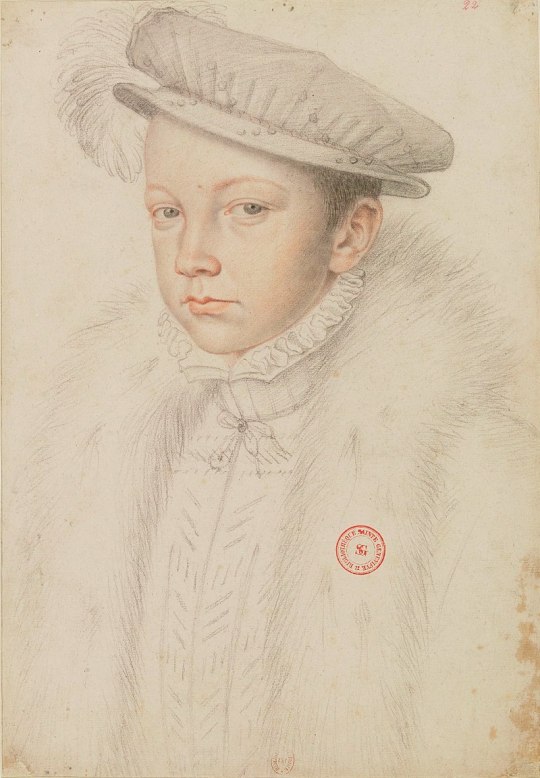

On December 5th 1560 King Francis II of France, the husband of Mary Queen of Scots, died.
Although not crowned it has to be remembered that Francis was also King consort of Scotland.
Francis was born on 19th January 1544, the eldest son of Henry II of France and Catherine de Medici, he was named for his grandfather, King Francis I. When Francis was four years old, the Scots and French signed the Treaty of Haddington in July 1548 arranging the betrothal of Mary Queen of Scots and the dauphin Francis in return for French aid to expel the invading English. Mary Queen of Scots sailed from Dumbarton for France in the August of 1548 when she was but five years old. The young Queen was accompanied by her four Marys, the daughters of Scottish noble families, Mary Beaton, Mary Seton, Mary Fleming and Mary Livingston.
Mary spent the rest of her childhood at the court of her father-in-law, Henri II Her father-in-law, Henry II of France wrote ‘from the very first day they met, my son and she got on as well together as if they had known each other for a long time’. Mary was a pretty child and brought up in the same nursery as her future husband and his siblings, became very attached to him. She corresponded regularly Mary of Guise , who remained in Scotland to rule as regent for her daughter. Much of her early life was spent at Château de Chambord. She was educated at the French court learning French, Latin, Greek, Spanish and Italian and enjoyed falconry, needlework, poetry, prose, horse riding and playing musical instruments.
Mary was the cosseted darling of the French court, the doting Henri II wrote 'The little Queen of Scots is the most perfect child I have ever seen.’ He corresponded frequently with Mary of Guise, expressing his delight in his young daughter-in-law. Mary’s maternal grandmother, Antoinette of Guise, in a letter to her daughter in Scotland, stated that she found Mary ’ very pretty, graceful and self assured.’
Francis and Mary were married with spectacular pageantry and magnificence in the cathedral of Notre Dame, Paris, by the Cardinal Archbishop of Rouen, in the presence of Henry II, Queen Catherine de’ Medici and a glittering throng of cardinals and nobles. The French courtier Pierre de Brantôme described Mary as ‘a hundred times more beautiful than a goddess of heaven … her person alone was worth a kingdom.’
Among the wedding guests was one, James Hepburn Earl of Bothwell. Francis was fourteen and Mary fifteen at the time, Francis then held the title King consort of Scotland until his death.
When Henri II was killed during a jousting contest, incidentally by Gabriel de Lorges, Comte de Montgomery, Captain of The Scots Guard, and a descendant of Alexander Montgomerie of Auchterhouse, Mary’s young husband Francois ascended the throne. Francis was reported to have found the crown of France so heavy that the nobles were obliged to hold it in place for him.
The young Francis became a tool of Mary’s maternal relations, the ambitious Guise family, who seized the chance for power and hoped to crush the Huguenots in France. The Huguenot leader, Louis de Bourbon, prince de Condé plotted the conspiracy of Amboise in March 1560, an abortive coup d'etat in which Huguenots surrounded the Château of Amboise and attempted to seize the King. The conspiracy was savagely put down, and its failure led to increase the power of the Guises. This alarmed the king ’s mother, Catherine de Medici, who reacted by attempting to secure the appointment of the moderate Michel de L'Hospital as chancellor.
During the autumn of 1560 François became increasingly ill, and died from the complications of an ear condition, in Orléans, Loiret. Since the marriage had borne no children, the French throne passed to his 10-year-old brother, Charles IX. Mary was said to be grief-stricken Multiple diseases have been suggested as the cause of Francis’ death, such as mastoiditis, meningitis, or otitis exacerbated into an abscess. Francis was buried in the Basilica of St Denis.
There was no place for the seventeen year old Mary, Queen of Scots in France, she prepared to return to her native Scotland with an uncertain future that would hold.
35 notes
·
View notes
Text
Chateau de Chantilly






Chateau de Chantilly is located in the town of Chantilly in Oise, France. A medieval castle once sat on the site, but all that’s left of it are the circular towers beneath the moat. Chantilly was owned by many noble families who were often related to the monarch. The Orgemont’s acquired the estate in 1386 AD and built a fortress. In 1560, the Montmorency’s owned the estate and had the Petit chateau built in the French Renaissance style. In 1632, the castle was confiscated by the king after Henri II Montmorency was beheaded for rebelling against Louis XIII’s minister, but the estate was returned to the Montmorency family in 1643. The Condéfamily designed a new classical building on the old fortified chateau and built the Great Stables to house 240 horses, 300 hunting dogs, as well as grooms and equipment. The chateau still offers equestrian shows during the year. During the French Revolution, the chateau functioned as a prison, and its art was removed to the Louvre. The main castle wing was destroyed in 1799. In 1875, Henri d’Orleans, Duke Aumale, King Louis-Philippe son, rebuilt the Grand Chateau to house his collections. Having no heirs after losing two sons, the estate was left to the Institute of France in 1884. The estate opened its doors to the public in 1898 under the name CondéMuseum. The castle sits on about 20,000 acres and is surrounded by a moat. The estate has roughly 284 acres of gardens, including a French-style garden, an English garden, and an Anglo-Chinese garden, which houses the Hamlet, made up of five small rustic houses.The property has numerous fountains, statues, and water features. The castle boasts Chippendale woodwork, art galleries, a reading room, a music room, a deer gallery, apartments, an 1882 chapel dedicated to Saint-Louis, the psyche gallery with 44 stained glass windows from the 16thcentury, and large reception rooms with lavish décor. Chantilly Castle houses the Condé Museum art gallery with 1,000 paintings, 2,500 drawings, 2,500 engravings, and more on exhibit. Chateau de Chantilly is usually open to the public, but it is closed at this time.
8 notes
·
View notes